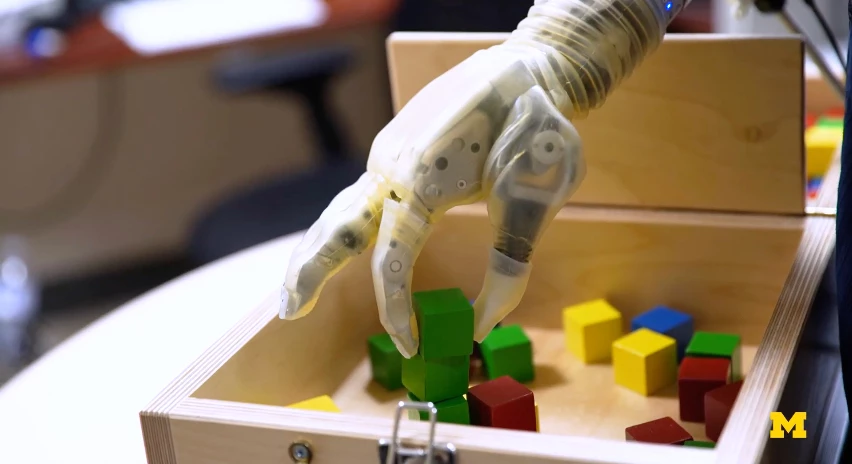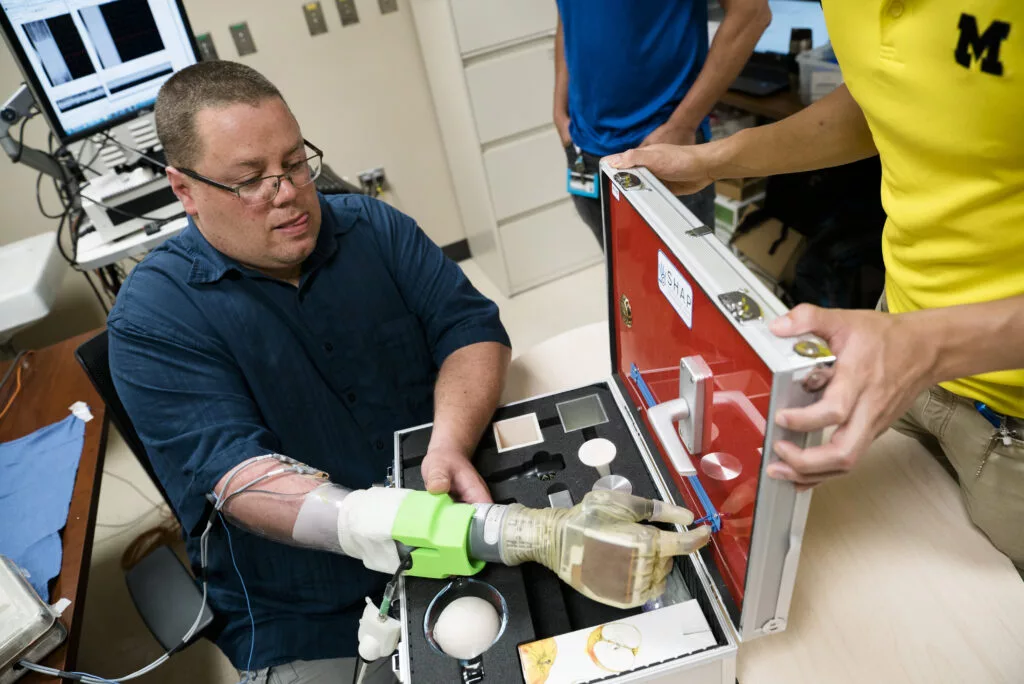Various groups have already developed "thought-controlled" prosthetic hands, that respond to nerve impulses in the user's residual arm stump. A new system could make such hands easier than ever to use, by amplifying those impulses.
The main problem with using peripheral arm-stump nerves lies in the fact that the electrical signals carried by them are relatively weak, and thus difficult for prostheses' implanted electrodes to read. As a result, users have to learn very specific thought patterns for different hand functions, and those functions tend to be pretty basic.
Additionally, after the electrodes have been surgically connected to the nerves, scar tissue may end up forming at the junction – this ultimately causes the signals to be even more difficult to detect. Nerve impulses are stronger where they originate, at the brain, but implanting electrodes there is much more invasive, and potentially risky.
Instead, scientists at the University of Michigan have wrapped tiny muscle grafts around the severed ends of nerves in four amputees' arm stumps. These graft/nerve-ending packages are known as "regenerative peripheral nerve interfaces" (RPNIs) and they greatly increase the electrical strength of nerve signals by converting them into muscle signals, making for high-resolution impulses that are far easier to read.
And as an added bonus, the grafts provide tissue for the nerves to grow into. This prevents the formation of neuromas, which are painful nerve bundles that sometimes form at injury sites.

In lab tests utilizing a commercially-available Mobius Bionics LUKE prosthetic arm, the RPNI-enabled amputees were instantly able to perform a variety of tasks, without any prior training – instead, they simply thought about what they wanted the arm's hand to do. Among other things, they were able to grasp and pick up blocks, lift spherical objects, and play a game similar to Rock, Paper, Scissors. Control of individual fingers was even possible.
"It’s going to be a ways from here, but we’re not going to stop working on this until we can completely restore able-bodied hand movements," says Assoc. Prof. Cindy Chestek, who is leading the research alongside Prof. Paul Cederna. "That’s the dream of neuroprosthetics."
A clinical trail is now underway, for which volunteers are being sought.
The research is described in a paper that was recently published in the journal Science Translational Medicine.
Source: University of Michigan




